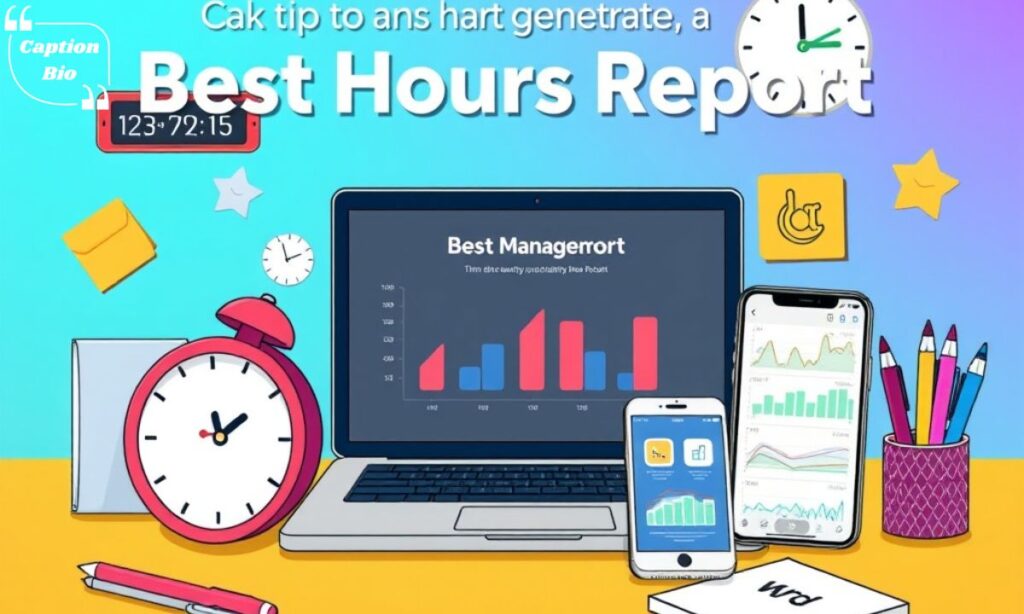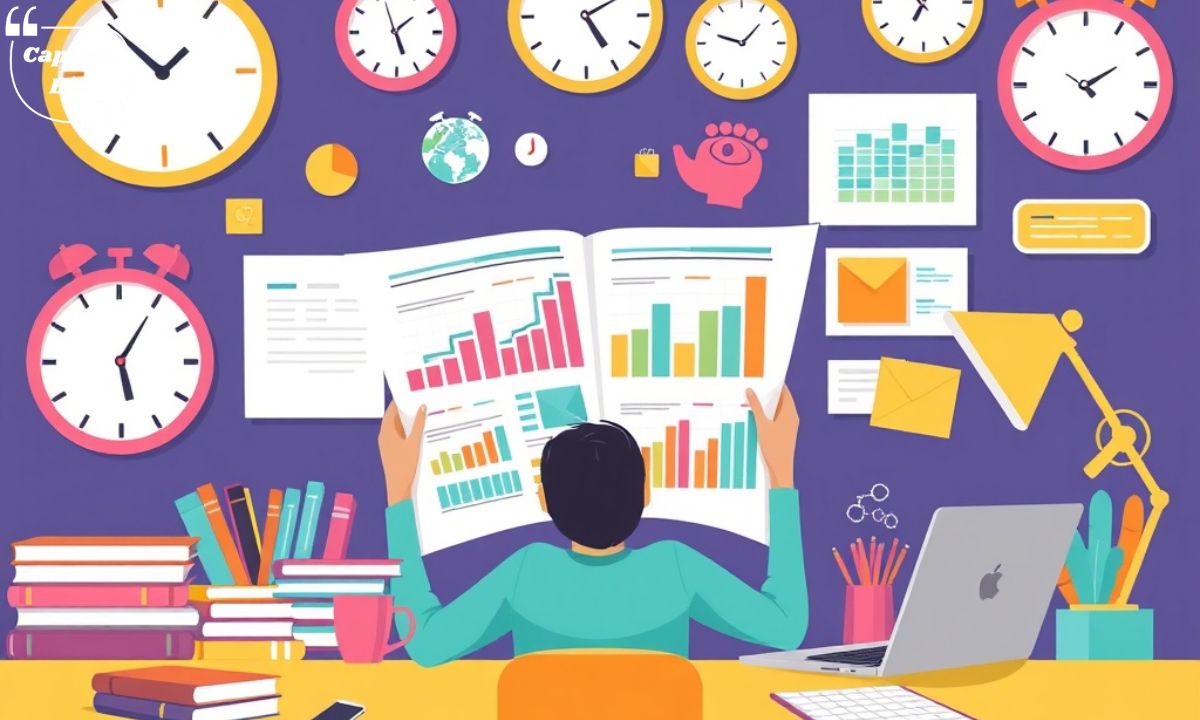Time is the one thing you can’t earn back once it’s spent. We all get 24 hours each day, but some hours are worth more than others depending on your focus and energy levels. Knowing exactly when you’re at your sharpest can change how much you get done — and how easily you do it.
That’s exactly where the Best Hours Report becomes a game-changer. By showing you when your mind is at its most productive, it helps you make the smartest choices about when to tackle your most important work.
What Is the Best Hours Report?
The Best Hours Report is essentially a productivity snapshot based on your daily patterns. It uses data from time-tracking tools to show when you’re most alert, efficient, and able to handle complex tasks.
Think of it as your personal “energy graph” — a visual representation of your mental peaks and valleys. With it, you can clearly see the difference between hours when you’re powering through deep work and hours when distractions creep in.
Tools That Offer a Best Hours Report
Many modern productivity apps have built-in analytics that highlight your best working hours. The right tool depends on whether you work solo, in a team, or in a creative field.
Examples include:
- RescueTime – Tracks activity automatically and gives a clear productivity score.
- Clockify – Great for teams, with detailed hourly breakdowns.
- Toggl Track – Easy-to-read reports with a timeline view.
- Rize – AI-powered insights for focus improvement.
The Psychology Behind Time Awareness
Being busy doesn’t necessarily mean being productive. Time awareness shifts the focus from simply filling hours to using them effectively.
When you understand how your mind operates throughout the day, you stop guessing and start scheduling your work when you’re truly capable of performing at your best.
Why Awareness Matters?
Studies show that a huge portion of our day is lost to unfocused thinking. By becoming aware of your peak hours, you can:
- Concentrate better in the present moment.
- Reduce unnecessary mental strain.
- Plan your work with more purpose.
Your Brain’s Natural Rhythms

Everyone’s energy follows a natural cycle called the circadian rhythm. These biological patterns influence when you feel energized or drained.
Your Best Hours Report captures these patterns in action, showing when your mind is most likely to hit its flow state and when it’s better to rest or shift to lighter work.
Key Metrics Tracked in a Best Hours Report
To give you accurate insights, a Best Hours Report focuses on specific productivity measurements such as:
Common Data Points:
- Deep Work Duration – How long you sustain uninterrupted focus.
- Task Switching Rate – How often you jump between different tasks.
- Distraction Time – Time spent on non-work activities.
- Overall Productivity Score – A combined measure of quantity and quality.
- Category Breakdown – How your hours are split between types of work.
Sample Report Breakdown:
| Time Slot | Focus Minutes | Distractions | Productivity % |
| 8 AM – 9 AM | 50 | 5 | 90% |
| 10 AM – 11 AM | 42 | 12 | 75% |
| 3 PM – 4 PM | 20 | 25 | 45% |
This layout helps you see exactly where your strongest and weakest hours fall.
How to Interpret Your Best Hours Report
Once you have the data, the real benefit comes from understanding what it means.
Spot Your Peak Hours
Look for blocks where focus time is high, distractions are low, and output is strong. For some people, that’s mid-morning. For others, it could be late at night.
Notice Energy Dips
When you see low productivity paired with high distractions, that’s a sign of a slump. Use these periods for less demanding work or short breaks.
Sample Insight:
If your report shows 2 PM – 4 PM as a low-energy window, you might schedule admin tasks, quick calls, or a walk during that time instead of deep creative work.
Strategies to Maximize Your Peak Productivity Hours
Knowing your best hours is only useful if you plan around them.
Effective Techniques:
- Time Blocking – Reserve top focus hours for your most demanding work.
- Task Batching – Do similar tasks in one block to reduce mental switching.
- Energy Prep – Eat well, rest, and limit distractions before key hours.
Example Schedule Based on Report:
| Time Slot | Task Type | Reason |
| 8 AM – 11 AM | Writing/Problem Solving | Highest mental clarity |
| 11 AM – 12 PM | Emails/Admin | Slight focus dip but still effective |
| 1 PM – 2 PM | Lunch/Break | Recharge |
| 2 PM – 3 PM | Meetings/Calls | Lower creative energy |
| 4 PM – 5 PM | Review/Planning | Moderate focus returns |
How Consistent Tracking Transforms Your Time Management
Tracking over weeks and months builds a clearer picture of your work habits. Small adjustments based on this data can lead to massive long-term productivity gains.
30/60/90 Day Transformation:
| Timeframe | Discovery | Action Taken |
| Day 30 | Found peak hours: 9–11 AM | Blocked calendar for deep work |
| Day 60 | Afternoon distractions high | Scheduled lighter tasks post-lunch |
| Day 90 | Output up 20% | Maintained optimized schedule |
Tools That Generate a Best Hours Report

Not all tracking tools are equal — look for ones that run quietly in the background, sync with your calendar, and present clear visuals.
Comparison Table:
| Tool | Auto Tracking | Best Hours Feature | Team Use | Notable Point |
| RescueTime | ✅ | ✅ | ❌ | Great for individuals |
| Clockify | ✅ | ✅ (manual) | ✅ | Best for team use |
| Rize | ✅ | ✅ (AI-powered) | ❌ | Focus coaching included |
| Toggl | ✅ | ❌ | ✅ | Clean, simple interface |
Common Mistakes to Avoid When Using Time Reports
Don’t Fall Into These Traps:
- Confusing effort with effectiveness — measure results, not just hours.
- Overcrowding your best hours with too many tasks.
- Ignoring natural slumps and forcing productivity.
- Forgetting to review and update your report regularly.
Bonus Tips: Combine Best Hours Report with These Habits
- Daily Reflection – Compare your day’s flow to your report.
- Pomodoro Technique – Short sprints during your peak hours.
- Weekly Planning – Adjust schedules every Sunday.
- Habit Pairing – Link breaks with healthy habits like stretching or hydration.
Conclusion
Most people work reactively, jumping from one task to another without considering timing. A Best Hours Report flips that mindset by giving you the data you need to match the right work to the right time.
When your schedule aligns with your energy cycles, you get more done in less time, avoid burnout, and feel more in control of your workday.

Jane Doe, founder of CaptionBio.co.uk, crafts heartfelt messages to inspire love, gratitude, and daily positivity. Let’s spread kindness through words!






